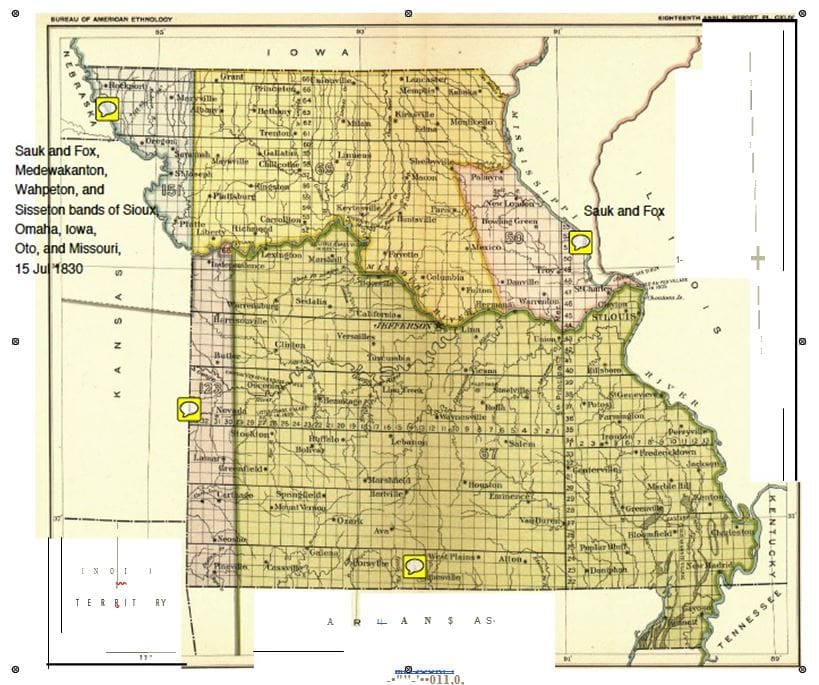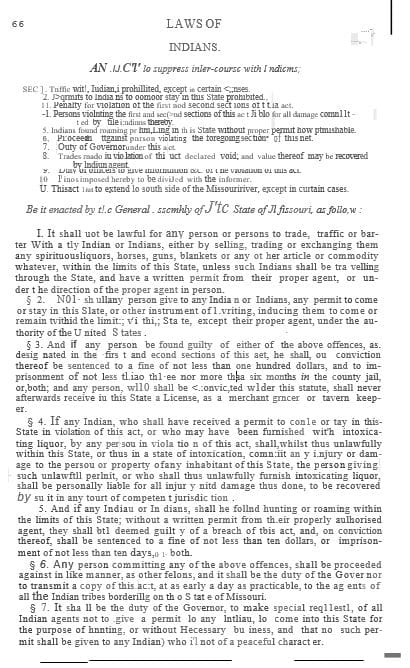Avila University Indigenous Peoples Land Acknowledgement and Recognition
We respectfully acknowledge that Avila University in Kansas City, Missouri is located on the ancestral homelands of the Wahzhazhe (Osage), Kanza (Kaw), Jiwere (Otoe) and Nutachi (Missouria) Tribes. The Pianshaw and Kaskaskia tribes had land here via treaty as well, as did the Shawnee and Delaware.
We also acknowledge there are many other Tribal Nations with ties to this land, including those removed to this land from their ancestral homelands and those traveling through this region on forced marches due to Indian Removal efforts. The Potawatomi were marched near Avila on their March of Death.
This land acknowledgment gives gratitude to the original caretakers and affirms the continuing relationship between Indigenous People and this land. As current stewards of these lands, it is our responsibility to understand the history of the land, the peoples who came before us, and their continuing ties to this place.
It is our intent is to make this a true living acknowledgment that has an active commitment rather than just a statement. As such, we pledge to continue to work closely with the Kansas City Indian Center and other Indigenous People to create an environment that encourages learning about Indigenous People, including cultural, historical and contemporary experiences. We thank those preceding us for their strength and resilience in protecting this land and aspire to uphold our responsibilities according to their example.
Principle Acknowledgments & Recognition
The Kansas City area is the ancestral homeland of the Osage Nation. Other tribes that consider this area, (Missouri/Kansas), their ancestral homelands are the Kaw (Kanza), Otoe and Missouria. The Otoe and Missouria were originally from the Great Lakes Region, but migrated
from there sometime in the 16th century. The Osage, Kanza, and other tribes closely related to them, are descendants of the ancient mound building tribes, who built Cahokia Mounds and Sugarloaf Mound near St. Louis and people commonly known as “Hopewell” tribes.
Respectfully, we also acknowledge the tribes that were removed to reservations in this area through treaties and the Indian Removal Act. Tribes that were removed from their homelands and lived in the NW Missouri and Eastern Kansas region include Shawnee, Lenape (Delaware), Wyandot, , Chippewa, Wea, Peoria, Miami, Ottawa, Omaha, Sak & Fox (Meskwakies), Potawatomie, Iowa and Kickapoo. Sak & Fox (Meskwakies), Potawatomie, Iowa and Kickapoo still have reservations in Kansas, about 90 miles from Kansas City. The other tribes were again relocated to Oklahoma.
All of these tribes have a story of their tribe’s Trail of Tears or as the Citizen Band Potawatomie’s call it, Trail of Death during their relocation, including stories of their travels through this area.
Native American History & Cultural Resources
As current steward of these lands, it is our responsibility to understand the history of the land, the peoples who came before us and their continuing ties to this place. We pledge to continue to work closely with the Kansas City Indian Center and other Indigenous people to create an environment that encourages learning about Indigenous people, including culture, history and contemporary experiences.
The creation and management of this virtual toolkit was done in collaboration with the Kansas City Indian Center and the Osage Nation Historic Preservation Office. It is a living document and will be updated as new information is gathered and verified.
- National Museum of the American Indian (an active component of the Smithsonian Institution)
- Native American Cultures (History Channel)
- Native American History and Culture: Finding Pictures (Library of Congress)
- Federally Recognized Indian Tribes and Resources for Native Americans (USA.gov)
- Indians/Native Americans (National Archives)
- Wahzhazhe Cultural Center (Osage Nation)
- The Kaw Nation: People of the Southwind
- The Otoe-Missouria Tribe
- Shawnee Tribe
- Delaware Tribe of Nations (Lenape)
- Wyandotte Nation
- Chippewa Indians (Ohio History Central)
- Wea Indian Tribe of Indiana
- Peoria Tribe of Indians of Oklahoma
- The Miami Tribe of Oklahoma
- Ottawa Tribe of Oklahoma
- Omaha Tribe of Nebraska
- Sac and Fox Nation of Missouri
- Prairie Band Potawatomie Nation
- Iowa Tribe of Kansas and Nebraska
- Kickapoo Tribe in Kansas
- Shawnee Mission Indian State Historic Site (Kansas Historical Society)
Native Americans in Greater Kansas City & Local Organizations
Kansas City Indian Center
Incorporated in 1971, the Heart of America Indian Center, Inc., d/b/a Kansas City Indian Center operates as the Kansas City area’s only multi-purpose social service agency for American Indians
American Indian Council – Kansas City
Facebook page. Employment & Training Program for American Indians who reside in Iowa, Kansas or Missouri.
Haskell Indian Nations University
In Lawrence, Kansas. Haskell is a unique and diverse inter-tribal university committed to the advancement of sovereignty, self-determination, and the inherent rights of tribes.
Guides and Articles
Missouri Indigenous Nations Research Guide
From University of Missouri Libraries. There are currently no federally recognized tribes in Missouri. Most Native Americans were forced to leave the state during Indian Removal and this included all original tribes in Missouri. Information on this page concerns the original tribes of Missouri and the tribes who moved here after being forced from their land before they too were removed during Removal.
Indians at the Crossroads: The Native Activism of Bobby and Nancy Blue
By Joshua Mika. Biography and oral history. Bobby Blue, a Choctaw Indian originally from Oklahoma, and Nancy, his wife, were leaders in Kansas City’s American Indian community since the early 1960s. The Blues were integral in starting the first American Indian social club in Kansas City and later the city’s first federally-funded non-profit organization – the Heart of America Indian Center (HAIC).
Maps and other information provided by the Kansas City Indian Center showing treaty lands and restrictions that existed in Missouri.




Other Missouri Treaties
- 1804 Treaty with Sac-Fox 1808-1809 Treaty with Osage
- 1815 Peace and Friendship Treaties at Portage des Sioux (Missouri) – William Clark, governor of Missouri Territory and Ninian Edwards, governor of Illinois Territory extended invitations to the Chiefs of any Nation that touched the waters of the Mississippi and Missouri Rivers. These treaties, at the conclusion of the War of 1812, were to bring Peace and Friendship between the residents of Missouri and Illinois and the Native Americans and formed the legal basis later used to remove tribes from Missouri. Tribes that signed these treaties are Potawatomi, Piankeshaw, Teton, Sioux, Makah, Kickapoo, Wyandot, Osage, Fox, Iowa.
- 1815-1816 Treaty with Sac-Fox 1821 Missouri became a State
- 1825 Treaty with Osage – ceded last remaining lands in Missouri 1825 Treaty with Shawnee – ceded last remaining lands in Missouri 1829 Treaty with Delaware – ceded last remaining lands in Missouri
- 1832– Treaty with Kickapoo, Peoria and Piankeshaw – previously resettled tribes agree to leave Missouri 1832 Treaty with Sac-Fox
- 1836 Platte Purchase Treaty –Iowa and Sac-Fox tribes ceded last remaining lands in Missouri
- A series of treaties, in 1830, 1833, 1836, and 1854, Ottoes and Missourias ceded all their lands in Missouri, Iowa, Kansas, and Nebraska—except for a reservation on Big Blue River in southern Nebraska.
